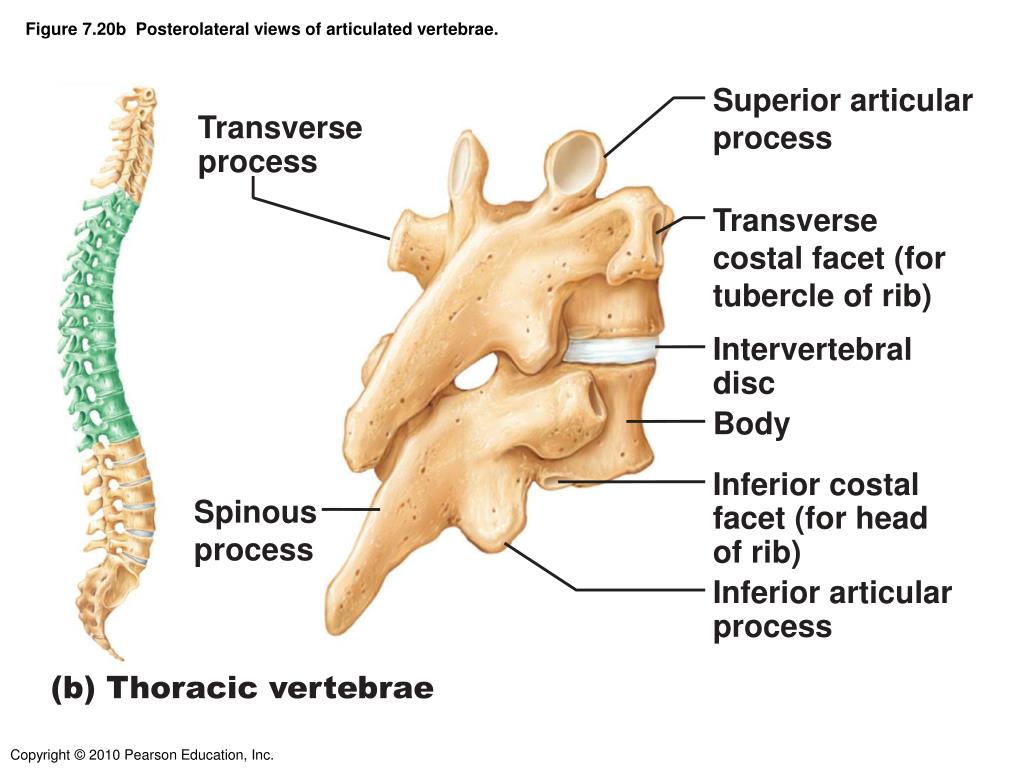
The point at which superior and articular facets meet is known as a facet, or zygapophyseal, joint. A typical vertebra also contains four articular processes, two superior and two inferior, which contact the inferior and superior articular processes of adjacent vertebrae, respectively.

The arch consists of bilateral pedicles, cylindrical segments of bone that connect the arch to the body, and bilateral lamina, bone segments form most of the arch, connecting the transverse and spinous processes. The arch, along with the posterior aspect of the body, forms the vertebral (spinal) canal, which contains the spinal cord. The vertebral body consists of a trabecular bone, which contains the red marrow, surrounded by a thin external layer of compact bone. Vertebral bodies increase in size from superior to inferior. The body bears the majority of the force placed on the vertebrae. Typical vertebrae consist of a vertebral body, a vertebral arch, as well as seven processes. Thoracic vertebrae are unique in that they have the additional role of providing attachments for the ribs. The thoracic vertebrae, as a group, produce a kyphotic curve. The intervertebral discs, along with the laminae, pedicles, and articular processes of adjacent vertebrae, create a space through which spinal nerves exit. The thoracic region contains 12 vertebrae, denoted T1-T12. The intervertebral discs are responsible for this mobility without sacrificing the supportive strength of the vertebral column.

The spine has several major roles in the body that include: protection of the spinal cord and branching spinal nerves, support for thorax and abdomen, and enables flexibility and mobility of the body. It extends from the skull to the coccyx and includes the cervical, thoracic, lumbar, and sacral regions. Vertebrae, along with intervertebral discs, compose the vertebral column or spine.


 0 kommentar(er)
0 kommentar(er)
